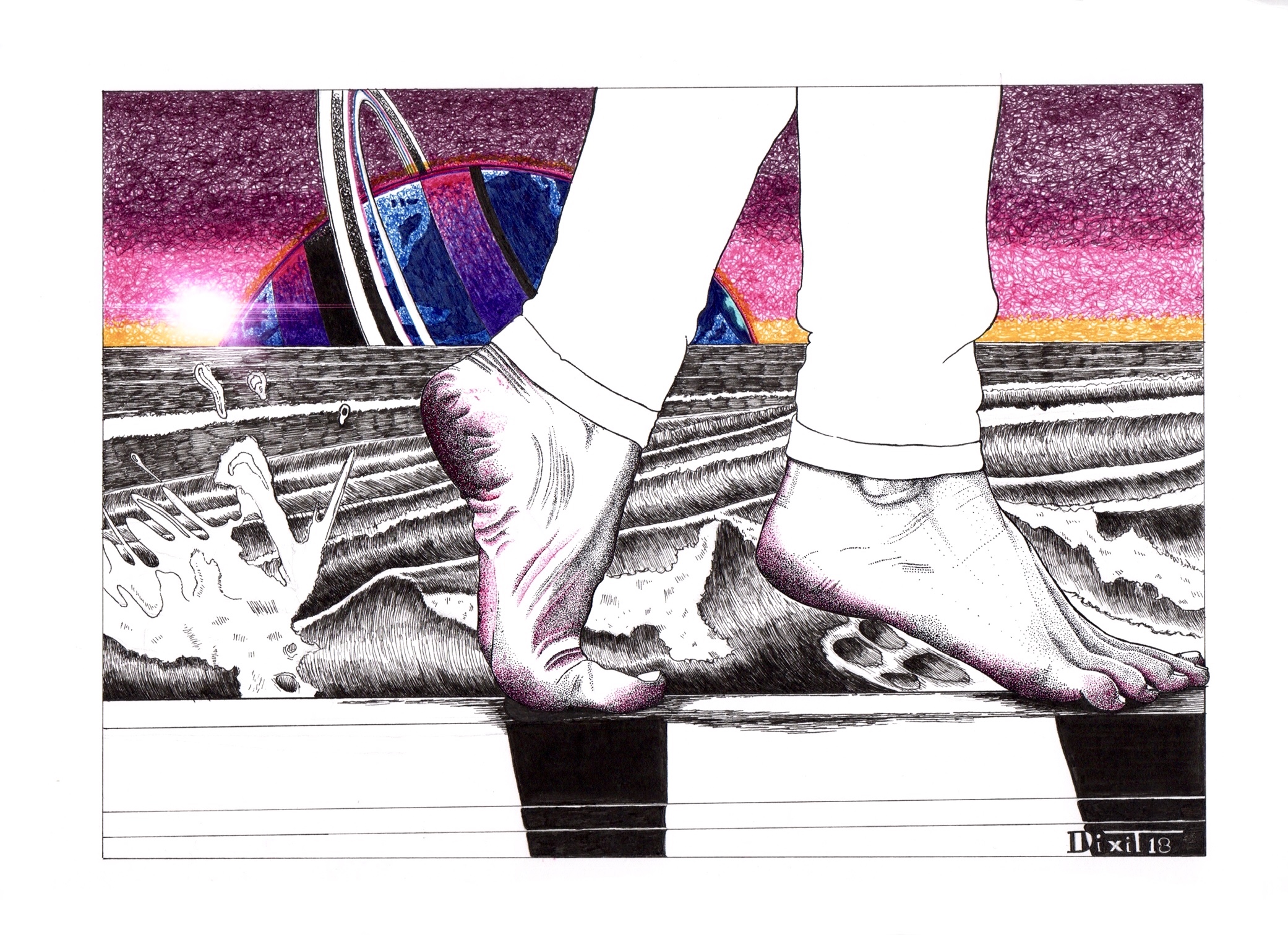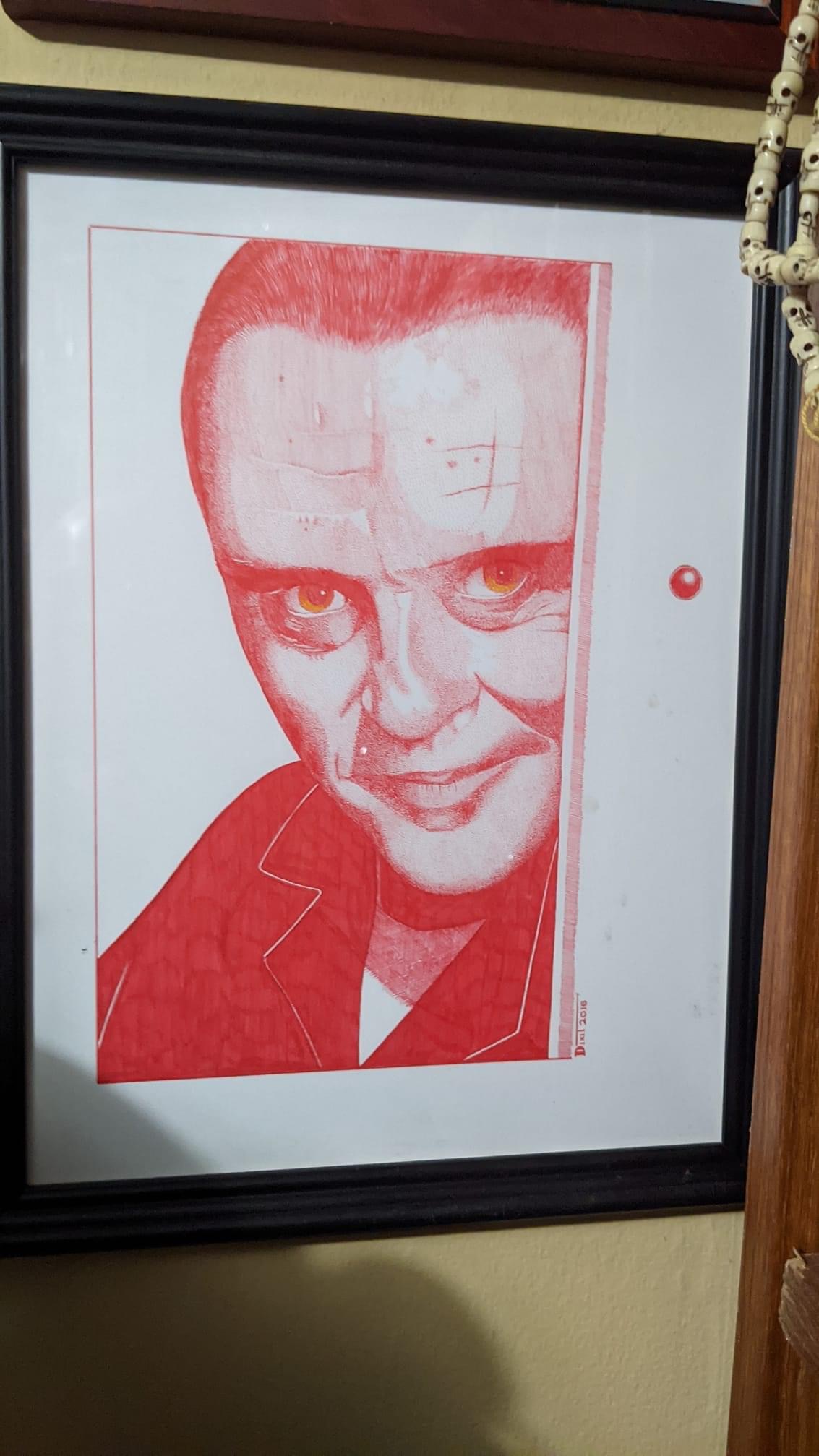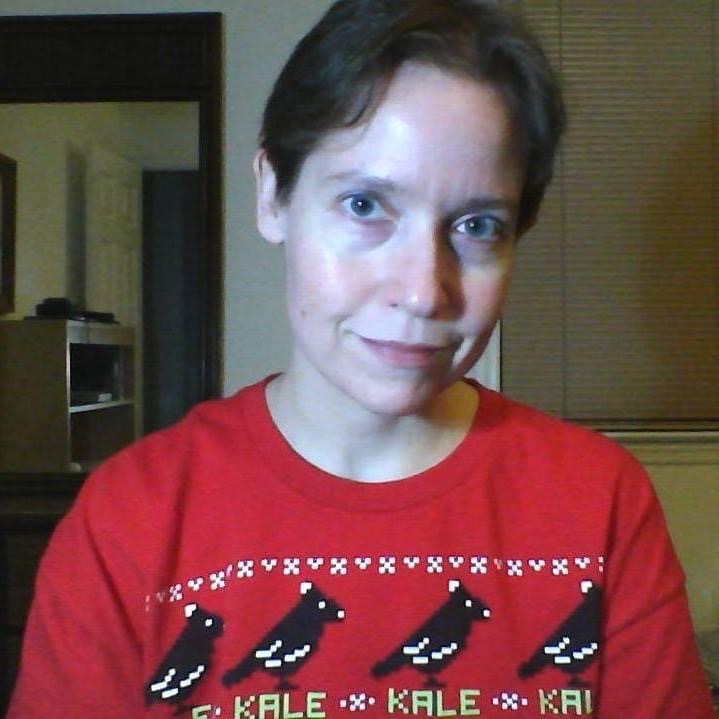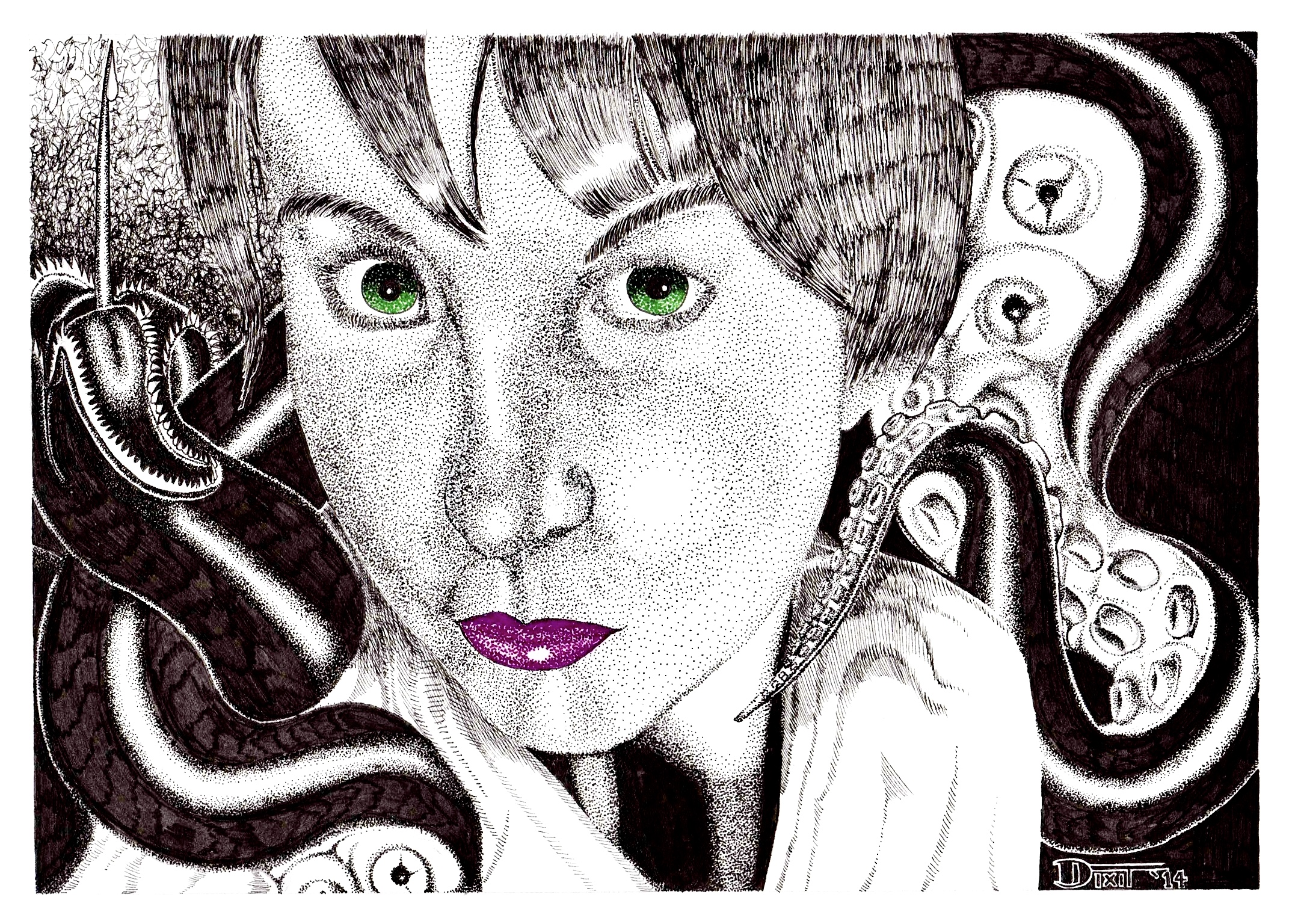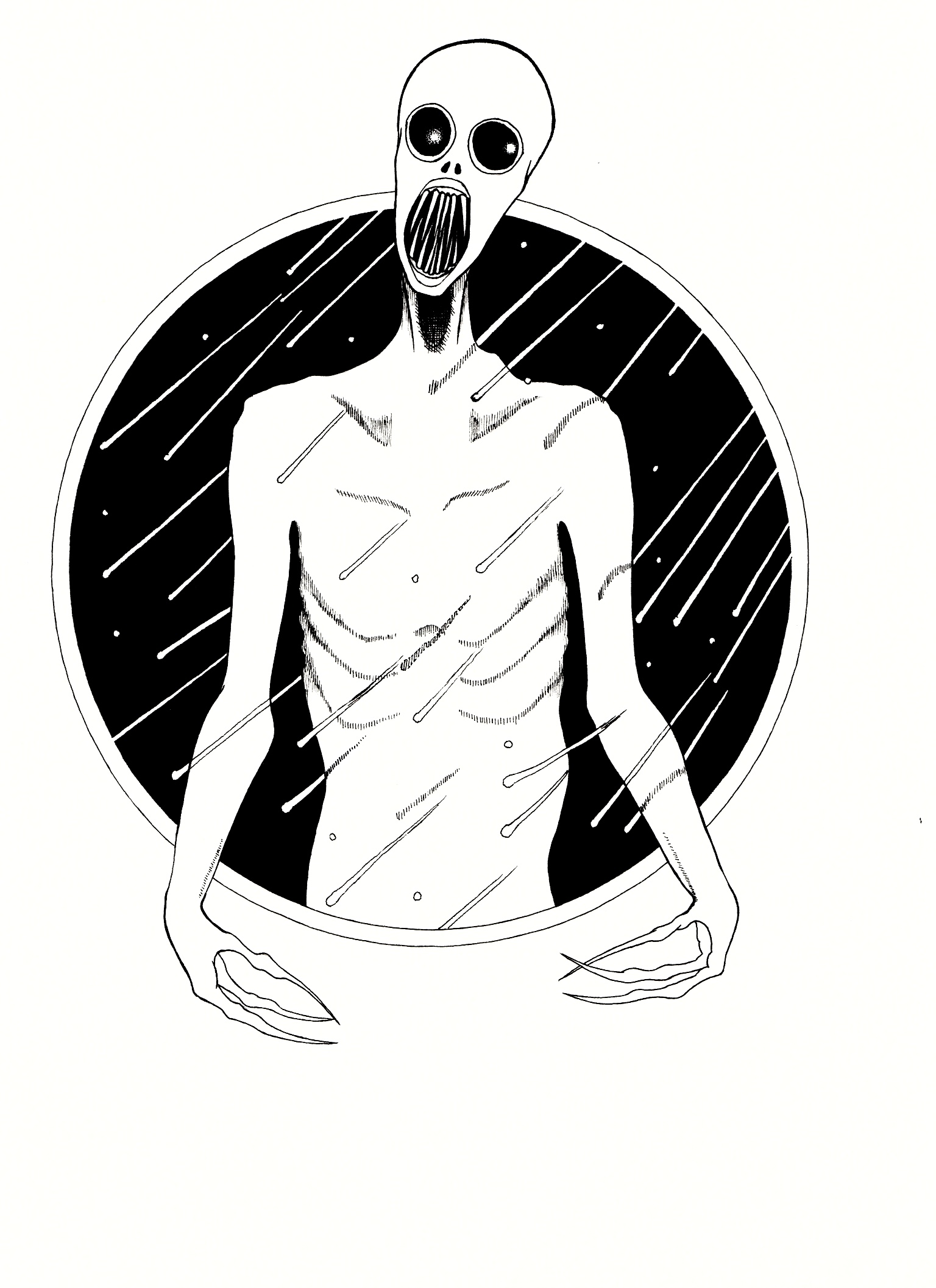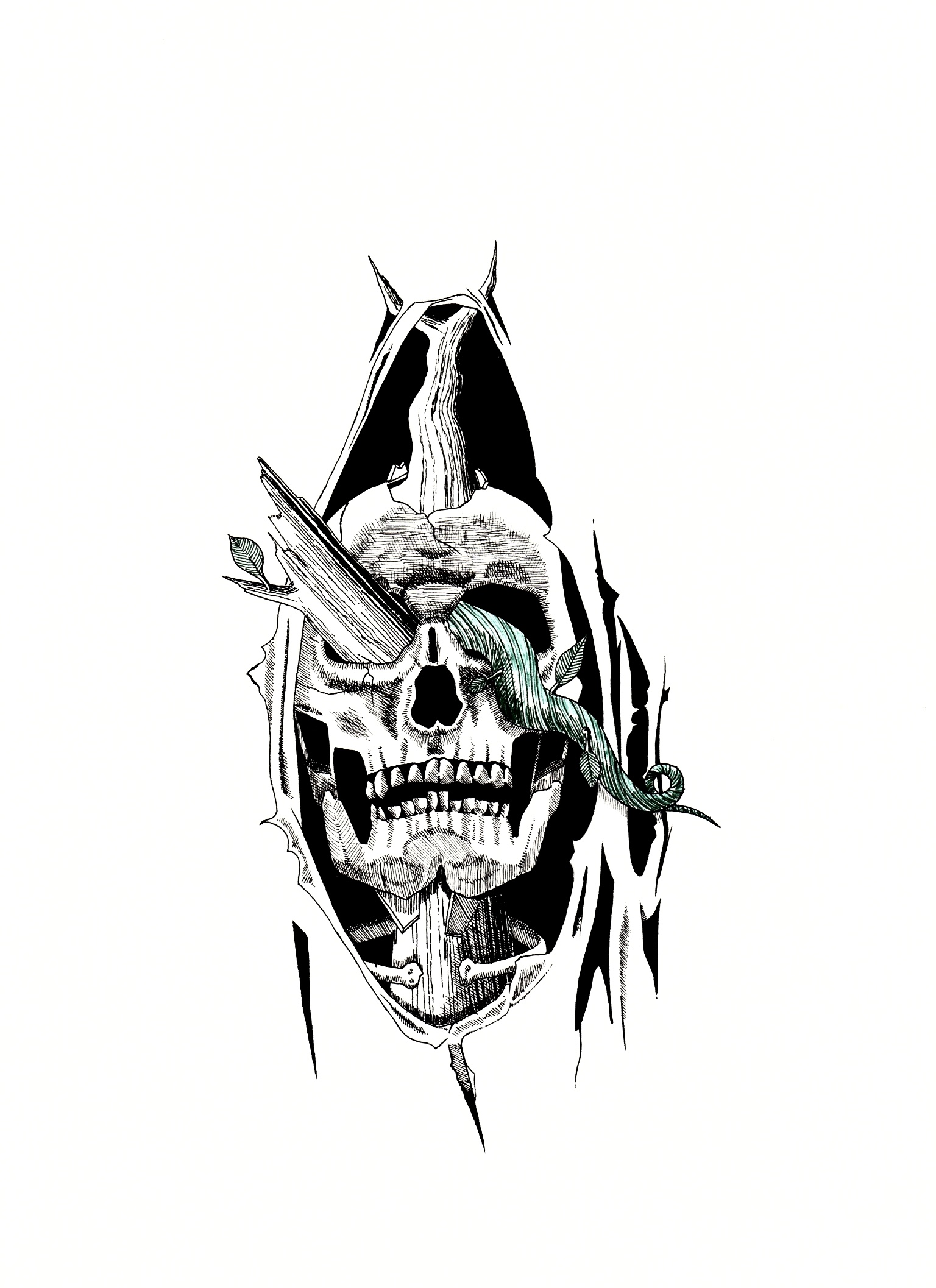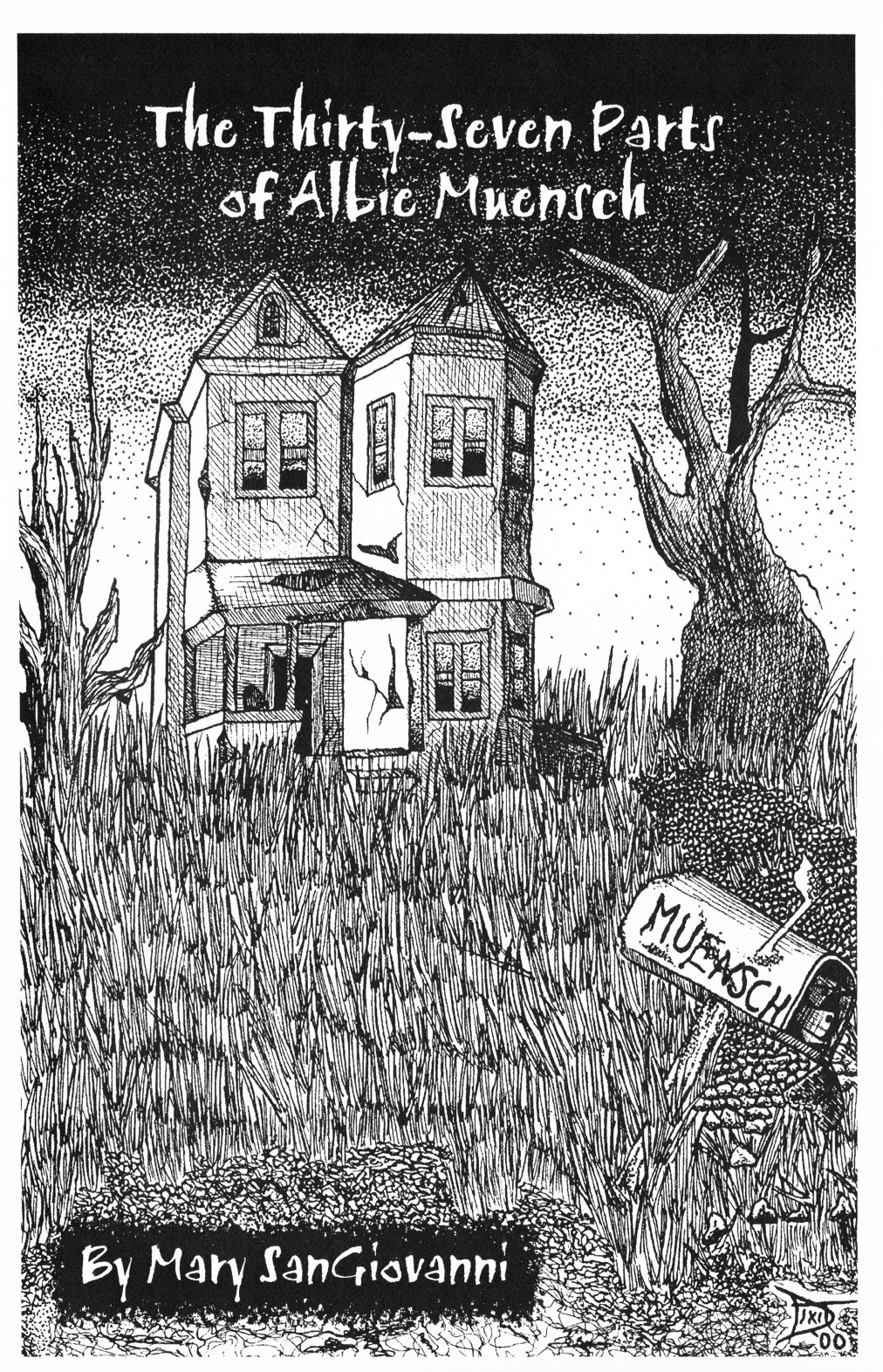My latest illustration, “A Giant Leap For Womankind,” is up in the October 2022 issue of Penumbric.
Author Archives
I Fly On Wings of Onyx Ink
You can toil and exert all your powers in the arts, whichever art you happen to practice, and still feel disappointment as your expectations remain unrealized, so it feels wonderful when something like this comes along:
“On behalf of Penumbric, I’d like to let you know ‘I Fly on Wings of Onyx Ink’ has been selected for the hard copy Best of Penumbric, vol v (June 2k21 to April 2k22)! Congratulations! And thank you again for submitting it to us in the first place!”
My thanks to Jeff Georgeson, editor-in-chief at Penumbric Magazine, for finding value in my drawings.
More of my drawings will be appearing in Penumbric over the next year. Here is the most recent example.
New Myths Live with My Cover Art
Vol. 16 / Issue 59 / Summer 2022
This illustration, titled “Flight,” was a jumping-off point for the excellent prose poem “New Beginnings,” written by the inimitable, gifted writer Marge Simon. We collaborated on a few projects, including one challenge wherein one person’s art acted as inspiration for another’s literary work. Working with Marge, even with her being 1,500 miles away in Florida, rekindled what, at the time, felt like an artistic block.
I also wrote a rather short story based on Marge’s drawing, “Vision.” The result is named “The Last Goodbye,” set to appear in the November 2022 issue of Hiraeth Publishing’s magazine The Martian Wave, edited by Tyree Campbell.
The Artist is a Lonely Hunter
You sit in a room devoid of human company, your eyes glued to a screen. You don’t so much as twitch. What’s on the screen fills you with loathing. Self-loathing. You are, simultaneously, emotionally barren, angry beyond all reasonable limits, and yearning for the approval of your peers; hell, yearning for the presence of your peers, somebody, anybody!…who is crazy enough to put themselves through this grinder for so little reward.
You are not “sucking the glass teat,” though it may seem so to an outsider, to anyone reading this limited collection of facts. In fact, you hate television! What you’re doing is the loneliest work on planet Earth, because you have to. You are possessed by a demon with no name, who compels you to come back and come back and come back again! You are punishing yourself for very little reward.
Death isn’t the only lonely business: with apologies to Ray Bradbury. Writing can be lonely, too. Very lonely.
I’ve been fortunate. I have had William O’Donnell as a friend. In 1992, Will talked me into going to a monthly meeting of the Garden State Horror Writers (GSHW), an organization geared towards supporting writers of genre fiction, even people who didn’t write horror. Will also cajoled me into joining the Horror Book Discussion Group at the late, lamented Borders Books & Music in East Brunswick, where I met the girl who would one day become my wife.
The GSHW was the brainchild of horror author Pat Graversen, who published a string of novels for Kensington Publisher’s Corp. during the 80s and early-90s. Without the friends and support I found at GSHW, the critiques and lessons, and necessary instruction on how one should structure a manuscript meant for publication and how to formulate a good cover letter, and before the internet age, the importance of accompanying with your manuscripts, a SASE (Say-Z), or Self-Addressed Stamped
Envelope. Every month, we had a guest speaker, often an established author or editor, and occasionally, an agent.
In such an atmosphere, even if only once a month, I felt ensconced in a community or writers, and yes, also artists. Writing was not lonely in those days. But in the early aughts, I began to have health problems, so I stopped attending meetings, though I remained a member in good standing for several years to follow (I was also a professional member of the Horror Writer’s Association (HWA)).
Gradually, with my only contact with the writing world the editors to whom I submitted my fiction, who increasingly rejected my work, the joy leeched away into the infertile soil of a fearsome depression. Writer’s block followed, and it lasted for ten years. The consequences to an artist, in any medium, of failing to practice their art range from dissatisfaction, pessimism and anger to major depression, failure to self-care (and care for your dependents) and suicidal ideation. High creativity is not a choice. Failure to practice it can ruin your life.
Author and psychological counselor Beth Pickens states in her 2021 book Make Your Art No Matter What: Moving Beyond Creative Hurdles, that “Artists need a community of other active artists who want good things for themselves and one another.” However, living in a suburban sprawl like Central Jersey makes for a virtual graveyard of “Creative Hurdles.” Yes, there are online groups and social media groups. But the hunt for groups that are as advanced as you, and not in the stratosphere, is in itself a disheartening endeavor.
And yet…and yet, there is something about meeting face-to-face with your peers and mentors that fosters inspiration in ways not found on Zoom, Google Meet, Microsoft Skype, and other cloud-based meeting spaces: mainly the private tête-à-têtes that allow one to speak freely and build friendships and alliances with like-minded people. With a single exception, all of my artistic friendships began with people that I spent real time with, in the physical world—people whose hands I shook (or in the age of COVID, an elbow bump would make for just as meaningful a contact.)
Weird Horror Issue 4
Weird Horror Issue 4/Spring 2022
Weird Horror #4 continues to evoke the deepest feelings of the most delicious dread two years since its launch. Some of the non-fiction and fiction contained herein:
Author/Editor/Horror Philosopher Simon Strantzas returns with another fascinating installment of On Horror. Next Wave Horror is the topic, and Mr. Strantzas clarifies immediately that if you are hoping for a treatise beginning with works of dread from Beowulf (666 A.C.E., for those who care) onwards, you should look elsewhere. The topic concerns the New Wave of the Genre of Horror, AKA Category Horror. Born circa 1970, the horror genre as we know it began with the publications of William Peter Blatty’s The Exorcist, Thomas Tryon’s The Other, and Ira Levin’s Rosemary’s Baby (do I detect a preoccupation with evil children?), all books by mainstream writers active in the early 70s. This concentration of horror novels resulted in the birth of First Wave Horror. The First Wave was defined by writers like Richard Matheson, Ray Bradbury, and Stephen King, as well as certain recurring concepts like twist endings and unpleasant children. The First Wave, Mr. Strantzas states, “remains the most popular form of horror story in the mainstream.” The nearing end of the Twentieth Century gave rise to Second Wave Horror, with young writers never knew a time prior to the horror boom of the First Wave (which I personally feel damaged the genre, due to the publishing industry’s preference of quantity over quality), and thus moved to a less literal, more metaphorical, more pessimistic (realistic) view of the vast cosmos and our miniscule part in it. I think Mr. Strantzas alluded to the fact the Second Wave horror writers add a more literary sensibility to their dark works. Here, Mr. Strantzas gave a nod the my favorite of the Second Wave authors, the largely mysterious Thomas Ligotti (I used to carry around my copy of The Nightmare Factory, or as I called it, the Gospel of Thomas, everywhere I went.) Twenty years after the birth of Second Wave horror, Mr. Strantzas states his belief that “we’re about to experience another shift led by a new wave … already percolating up through the small presses.” He does acknowledge the possibility that our much faster-moving society and culture could leave us “instead just a steady and constant onslaught of new writers and new kinds of work, a state of constant flux and noise, one that will be impossible to parse. Because it’s so overwhelming. A world where everything that can exist will exist and all at once.”
Orrin Grey, in this issue’s Grey’s Grotesqueries, makes the argument that in fiction, funny, silly or goofy incidents, or characters, do not necessarily dispel terror. In this highly persuasive argument, Grey posits that horror fiction where the artist diligently avoids even a dash of humor ends up with “somber meditations on grief, or bloody and brutal depictions of ostensibly realistic violence.” We’ve all seen those types of films. They are exhausting, perhaps disturbing, but have you ever wanted to give them a second viewing? I know that I haven’t. “Humor and horror, then, are…practically two sides of the same coin.” That one I intent to print out in huge letters and hang over. My writing desk! He mentions two masters at flipping that particular coin, the manga writer and artist, Junji Ito and author Matthew M. Bartlett. He ends by quoting an artist I’d never heard of, Trevor Henderson. The quote is illuminating and seals the cap of Grey’s cogent, highly convincing contention. But in order to read it, and to see the frankly horrifying reproduction from one of Junji Ito’s panels, originally published in one of his collections from Viz—you need to pick up a copy of Weird Horror Issue 4, available at:
https://undertowpublications.com/shop/weird-horror-4.
I do not review short stories, as they generally speak for themselves, but of the 10 entries in Issue 4, all of which were satisfactory, special kudos are extended to Armel Dagorn for his story “Figments of the Night,” to the always fascinating Steve Rasnic Tem for “Whenever it Comes,” to Andrew Humphrey for the thoroughly chilling “Hurled Against Rocks.” And to the single most effective story in Issue 4, “Camera’s Eye,” by Daniel David Froid. This ghastly descent into darkness, both literal and figurative, would not leave my mind for three sleepless nights! Froid maintained absolute control over every element in his story, and thus over the reader. I will be seeking Daniel David Friod’s first collection, as soon as it is published.
The story illustrations were competently rendered, by artist David Bowman, in a consistent hatching style. Also eye-catching is Drazen Kozjan’s perfectly pulpish cover illustration.
These fine stories were followed by the book review section, “The Macabre Reader,” more then ably handled by Lysette Stevenson. I love the fact that this section suggests new reading material in the horror/weird fiction fields that would not necessarily be evaluated in other journals. She does not waste time covering the latest Stephen King or Dean Koontz novel, as many other sources have already jumped on those books prior to their publication.
Similarly, Tom Goldstein fills his “Aberrant Visions” column with out-of-the-way films of the macabre, including quite a few foreign films. I don’t usually read the review sections of genre magazines, but Weird Horror’s inciteful and sometimes shudder-inducing book and film reviews are worth checking out. There are always a couple of offerings in each column that turn out to be worth their weight in blood, dissolved musculature, ligaments, and crushed bone!
At this point, none of the issues of Weird Horror have arrived late, unlike some other horror magazines I might mention. Editor Michael Kelly has proven that Weird Horror is also reliable in delivering the highest quality literary pulp horror and weird fiction, in a consistently attractive package. I think this magazine is here to stay.
On Distant Walls: My Art in Other People’s Homes
My Girl: 21 Years
This past Thursday, November 18, Sherry and I celebrated our 21st Wedding Anniversary. In hindsight, this post should have been made last year, but 2020 was a season in hell, and it slipped my mind.
Anyway, Sherry Martha Chmielewski is the best thing that ever happened to me, and I aim never to forget this.
I love you, woman; I’ve always loved you, since before either of us was ever born.
Review: Elizabeth Hand

Here is my latest book review. As many of you know, I rarely write book reviews, but when I do, they fall into one of two categories:
BOOKS I PARTICULARLY ENJOY
BOOKS WITH FALSE INFORMATION
This one falls into the former category .
(WARNING: THIS BOOK REVIEW CONTAINS SOME PARTIAL SPOILERS)
Published in 2017 by PM Press, Outspoken Authors: Elizabeth Hand is a revelation of a first-class literary stylist who is, like many geniuses, very humble about her accomplishments.
The book opens with Hand’s classic story, “The Saffron Gatherers,” which pulls you along quietly by the hand. It is ostensibly a love story, a meditation on the beauty of ancient art, and a commentary about San Francisco’s expensive housing. It is Hands poetic use of language that ratchets up the pleasure. Just as the reader thinks that this romantic fable will work out fine for both lovers, you abruptly find yourself reading an apocalyptic tale that leaves you in a state of shock.
The next story, “Fire,” has never before seen print. Without giving too much of it away, it is a tale about hope in the face of certain annihilation. “Fire,” like “The Saffron Gatherers,” seems to address apocalypse, which makes perfect sense, as in the next article, “Beyond Belief: On Becoming A Writer” and in her interview with Terry Bisson, Elizabeth Hand reveals her serious anxieties about climate change (NOTE: Hand’s groundbreaking novel, Glimmering, is the first work of fiction to directly acknowledge the reality of climate change.)
“Beyond Belief” reveals the evolution of a literary iconoclast. Her experiences, adventures, tragedies, and yes, traumas, all play integral parts in the formation of a literary artist, who places the importance of Character and Setting over Plot, contrary to the popular wisdom regarding storytelling. She is a poetic storyteller.
Hand discusses her process in “Beyond Belief” and her interview with Terry Bison, “Flying Squirrels in the Rafters.” Revision. Endless revision. She states, likely tongue-in-cheek, that she would like to be able to keep revising her books even after they have landed on bookstore shelves. To learn more about her literary ethos, writers in particular will want to read the sections mentioned above.
Between ” Beyond Belief” and ” Flying Squirrels…” is “Kronia,” a an eerily wonderful love story that jaunts through space and time. Hand’s lyrical prose style is present throughout.
Perhaps the most affecting (and tragic) pieces are her two essays, “The Woman Men Didn’t See,” and another titled simply, and affectionately, “Tom Disch.”
“The Woman Men Didn’t See” pulls back the curtain on one of science fiction’s most visionary writers, James Tiptree, Jr, who in his private life is, in fact, a woman named Alice Sheldon. Her experiences as a child are terrifying. His birth as part of the new wave in science fiction is to our good fortune, as readers of a genre which was going stale in the 1960s and early 70s would attest. Her stories were less a breath of fresh air, and more a savage multiple stabbing of the reader and the science fiction establishment, in general. Alas, James Tiptree, Jr’s story is a tragic one. For more on Tiptree Jr, I recommend purchasing Her Smoke Rose Up Forever by James Tiptree, Jr, a collection of 18 of the most terrifying science fiction stories you are likely to read (available from Tachyon Publications.) To learn more about the life and tragic end of Alice Sheldon, read James Tiptree, Jr.: The Double Life of Alice B. Sheldon, by Julia Phillips (National Book Award.)
At last, we come to, perhaps, the saddest, most personal, and loving essay about another iconoclastic writer, “Tom Disch.” One is given the strong impression that Elizabeth Hand knew Thomas M. Disch as more than merely an essay topic. His fiction largely involved contemplations of death and suicide.(Recommended works by Thomas M. Disch include On Wings of Song and Camp Concentration.)
The last pages have an extensive (and impressive) Bibliography oof Ms. Hand’s work current up till 2017.
Review: “The Shelter” by James Everington
A Coming-of-Age Nightmare
“The Shelter,” James Everington’s first novella-length publication, is proof positive that good writing can be found on Amazon’s self-publishing platform.
Told from the point-of-view of Alan Dean, a boy on the cusp of adolescence, it initially recounts how he and his closest friend, Duncan, have been unaccountably befriended by two older boys who once delighted in bullying them. It’s clear that on some level, Alan and Duncan are flattered by this strange bonding, one between two otherwise lonely pairs. That the two older boys, who still occasionally pick on the younger ones, might grow bored with them altogether, is a worry for Alan. There is, however, another dynamic in play: the smarter of the elder boys seemingly has an affinity for Alan, the second most intelligent of the four.
The day they set out to examine a WWII air-raid shelter, Alan knows something dark awaits them there. As they walk the long distance to this site, there is some discussion about a local boy gone missing. Once the boys reach the eponymous shelter, the pace quickens, but with a steady hand. In the end, the lives of these four are changed irrevocably, and Alan traumatized by what he finds in the dark, both figuratively and literally.
The inevitable comparisons to Stephen King’s “The Body,” another coming-of-age tale, begin and end with four boys setting out on an adventure. “The Shelter,” however, has an altogether darker tone. The children seem far less innocent, the destination painted by a presentiment of coming terrors, and cruelty honed to a significantly sharper edge. Everington manages all this admirably, with perhaps a bit too much foreshadowing, but still an enjoyable descent into nightmare country—certainly moreso than “The Body.”
Clearly, James Everington is a name one can expect to hear for some time to come.
The Art of Mary
This post is all about drawings based upon the fiction of Mary SanGiovanni.
This older author portrait shows us Mary’s first successful entity, The Hollower.
This next one was the result of a sudden inspiration.
This next drawing was inspired by Chills, the very first Kathy Ryan novel.
This was inspired by Savage Woods.
The following was my artwork for Mary’s chapbook “The Thirty-Seven Parts of Albie Meunsch,” my first successful collaboration with Mary:

